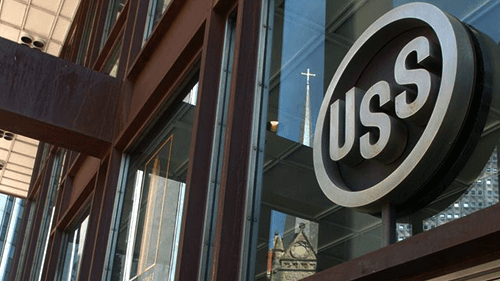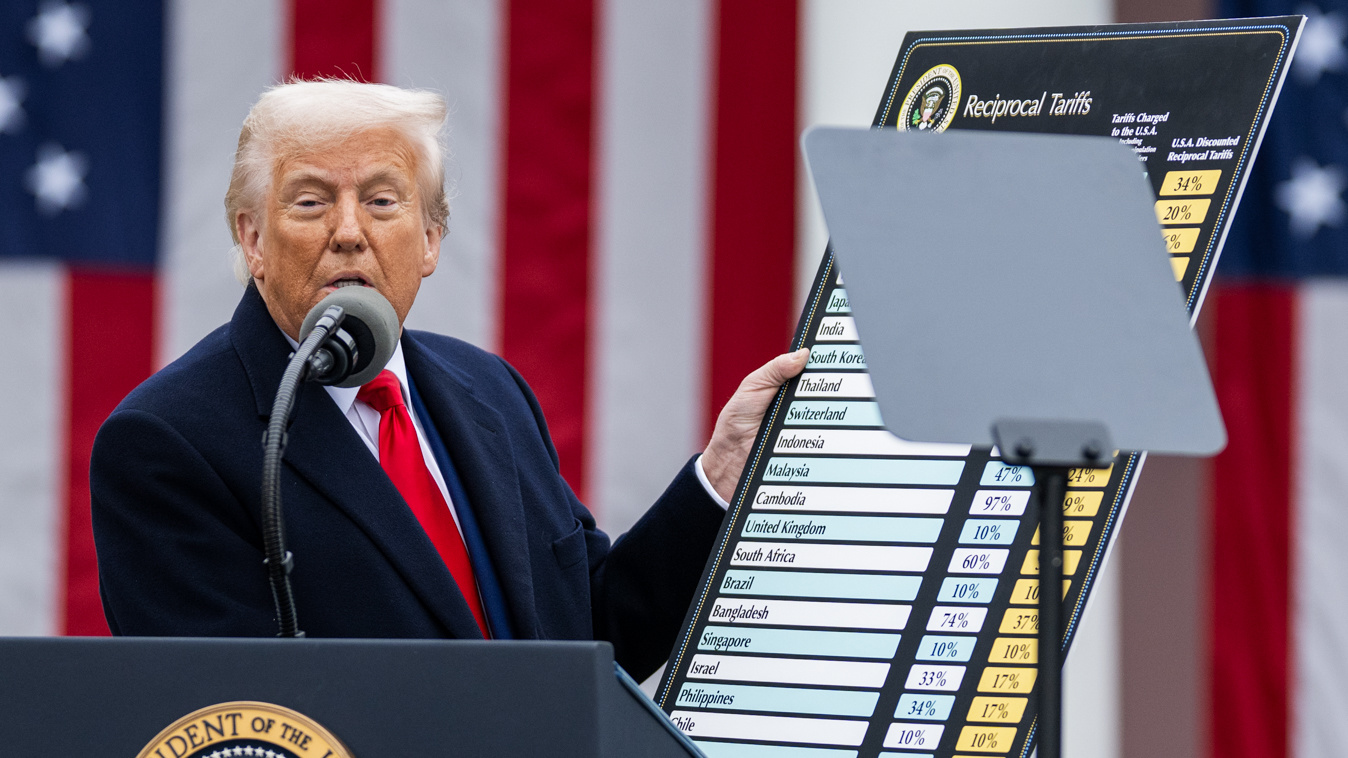Japanese steelmaker Nippon Steel has offered $14 billion for historic American company U.S. Steel. The deal is a bad idea. It’s bad for America, bad for steelworkers, bad for the U.S. manufacturing base. It’s even bad for U.S. Steel itself.
The U.S. has four major steelmakers. They are essential to the success and prosperity of the U.S. industrial base and the entire manufacturing sector. It would be a huge mistake to allow one of them to fall under foreign ownership. Whatever Nippon Steel says today about maintaining the U.S. presence of U.S. Steel, in the longer term its goals will include concentrating production in Japan and shutting down some of US Steel’s many U.S. facilities. Nippon Steel produced 44 million tonnes (MT for million metric tonnes) of steel last year, with a claimed global capacity of 66 MT a year, according to the joint presentation. U.S. Steel produced just under 15 MT, compared to capacity of around 20 MT.
The fundamental economics of steelmaking, where pushing daily steelmaking output up to as close as possible to the maximum, is a critical support for profitability, dictate that over time Nippon Steel will seek to concentrate steelmaking in fewer places. As Japan’s largest steelmaker with its best customers including Toyota and other mainstays of Japanese industry, its favored production locations will inevitably be in Japan. Over time, the needs of U.S. Steel’s customers would become secondary for Nippon Steel’s U.S. division. That will be bad news for U.S. Steel’s American customers, which include General Motors, other carmakers, and hundreds of small and mid-sized manufacturers.
Innovation in steel, as in other industries, depends on working closely with customers to develop specialized products to meet their needs. In steel that can mean specialized alloys or steels with special features such as hardness or ductility. Those customers can be small or large American companies or the Department of Defense. In all such cases, a parent company 6,000 miles away can and will interrupt the close relationships essential for industrial progress.
It’s important to understand that today’s American steel industry is successful, profitable, and creating good jobs across America. That’s why politicians of both parties, including Sen. John Fetterman (D-PA), Sen. Sherrod Brown (D-OH), Sen. JD Vance (R-OH) and Rep. Ro Khanna (D-CA) have all said publicly that they are opposed to the Nippon Steel acquisition of U.S. Steel. The deal still needs shareholder and regulatory approval.
This is not your grandfather’s steel industry. Billy Joel lamented the decline of Bethlehem Steel in a nostalgic video 40 years ago, but the steel industry today is completely different from the low-tech, labor-intensive industry he rhapsodized.
In the 1980s, the Nucor Corporation, a little-known maker of nuclear power equipment experimented with using high-voltage electricity to melt and purify scrap steel and turn it into raw steel bars. A new technology, electric arc furnace steelmaking (EAF) was born. It quickly began to take over the industry. EAF steelmaking is cheaper, cleaner, more efficient, and produces less emissions per ton than traditional blast furnace (BF) steelmaking.
Today, Nucor is America’s largest steelmaker, with over 25 million tons of production last year. The other three majors, U.S. Steel, Steel Dynamics, and Cleveland Cliffs, are all around the 12-15 million tons mark, as can be seen in Table 1.
Gross profit margin (the difference between the sales price of a ton of steel and the direct cost of the ingredients that went into it) is the best measure of the underlying profitability of a manufacturing business. As Table 1 shows, the gross margin of the two EAF steelmakers (Nucor and Steel Dynamics) is around ten points above that of U.S. Steel and 20 points above that of Cleveland Cliffs, which is still integrating some recent large acquisitions.
But over the past decade, the efficiency of the two EAF steelmakers has driven their two major competitors to get more efficient. U.S. Steel acquired an EAF steelmaking startup, Big River Steel, based in Arkansas. U.S. Steel is well down the path of transitioning to more modern, cost-effective, high-tech, cleaner steelmaking. The Japanese industry, still much more reliant on the older BF technology, has little to teach the U.S. industry. This is another reason why a growing number of politicians are taking a position against the Nippon Steel offer.
Table 1. America’s Top Four Steelmakers
| Steelmaker | Production 2022 (MT) | Revenue 2022 ($B) | Gross Margin 2022 |
| Nucor | 25.524 | $ 41.5 | 30.1% |
| US Steel | 14.942 | $ 21.1 | 20.4% |
| Cleveland Cliffs | 14.751 | $ 23.0 | 11.0% |
| Steel Dynamics | 12.158 | $ 22.3 | 27.5% |
| Source: SEC filings, author’s calculations. | |||
Profitable businesses lead to well-paid employees. Table 2, based on data in companies’ SEC filings, shows that the average employee at the big four steel companies earned just over $133,000 last year. It’s important to note that only two of the four companies are unionized, U.S. Steel and Cleveland Cliffs. In fact, the non-unionized EAF steelmakers have led the trend to raising steelworker pay, because they both have profit-sharing schemes, which have been copied to some degree by the two older firms. The Nucor figure understates comparable pay figures because it includes more non-steel workers than the others. Economic studies show that unions can push worker incomes up slightly, and they certainly contribute to higher levels of manpower at unionized firms. But the fundamental driver of higher worker incomes is profitability, industrial growth, and difficulty in finding and keeping qualified workers. In addition to those four steelmakers, there are others in the U.S., including divisions of foreign steel companies like Arcelor Mittal, which provide additional competition in the industry, and also must pay wages competitive with the big four to attract workers, generating more good-paying jobs.
The six-figure pay for employees, many of them without college degrees, makes steel one of the most desirable manufacturing industries for the U.S. The national security factor, that state-of-the-art, high-quality steel is essential for many pieces of defense equipment, from missiles to fighter jets and ships, is equally critical. Further, major U.S. steelmakers can work closely with small customers to develop customized alloys or other features that enable those customers to launch new products. In sum, the argument for maintaining a U.S.-owned steel industry is irrefutable.
Table 2. Steelworkers are well-paid
| Steelmaker | Total employees 2022 | Median worker income 2022 |
| Nucor | 29,758 | $ 124,199 |
| US Steel | 23,141 | $ 143,684 |
| Cleveland Cliffs | 25,535 | $ 132,220 |
| Steel Dynamics | 12,060 | $ 140,649 |
| Total/Weighted Avg. | 90,494 | $ 133,637 |
| Source: SEC filings, author’s calculations. | ||
Proponents of the Nippon Steel takeover like the Wall Street Journal have claimed that the 2018 steel tariffs reduced downstream U.S. manufacturing jobs. These claims are wrong. They are based on academic economic models that assume the 25% steel tariff raised the U.S. price of steel by 25%. In fact, the U.S. International Trade Commission did one of the few studies attempting to quantify the impact of the steel tariff on U.S. steel prices and found it was responsible for a tiny 2.47% rise in domestic steel prices. There is no real-world evidence that the steel or the aluminum tariffs caused any loss of downstream manufacturing jobs.
Another myth propagated by neoliberal advocates of “free trade” and unrestricted merger and acquisition activity is that the U.S. steel industry is inefficient compared to foreign competition. In fact, thanks to EAF technology, the U.S. is able to produce the same amount of steel today (about 80 MT) as it did 40 years ago with only one-fifth the number of employees. It is the most efficient and cleanest steel industry of any major nation.
The final, and perhaps most damaging neoliberal myth is that a takeover like that proposed by Nippon Steel will free up capital and labor which will then be redeployed into more productive industries. In fact, we’ve seen again and again that such takeovers lead to capital being returned to shareholders and not invested in any productive business. As the Financial Times recently pointed out, the top pro soccer teams in Britain, France, and Italy are all owned by American multi-millionaires and 45% of the billion-dollar global art market consists of purchases by Americans. This is all because free capital markets, in which companies can be bought and sold like properties on a Monopoly board, generate huge profits for shareholders and senior executives and minimal job-creating investment in the real economy.
There is a national interest in many U.S. industries, in terms of national security, economic growth and good paying jobs that can create opportunity and a more egalitarian society. Steel is prominent among them. The regulators and the Biden administration should say “No thank you” to Nippon Steel.












